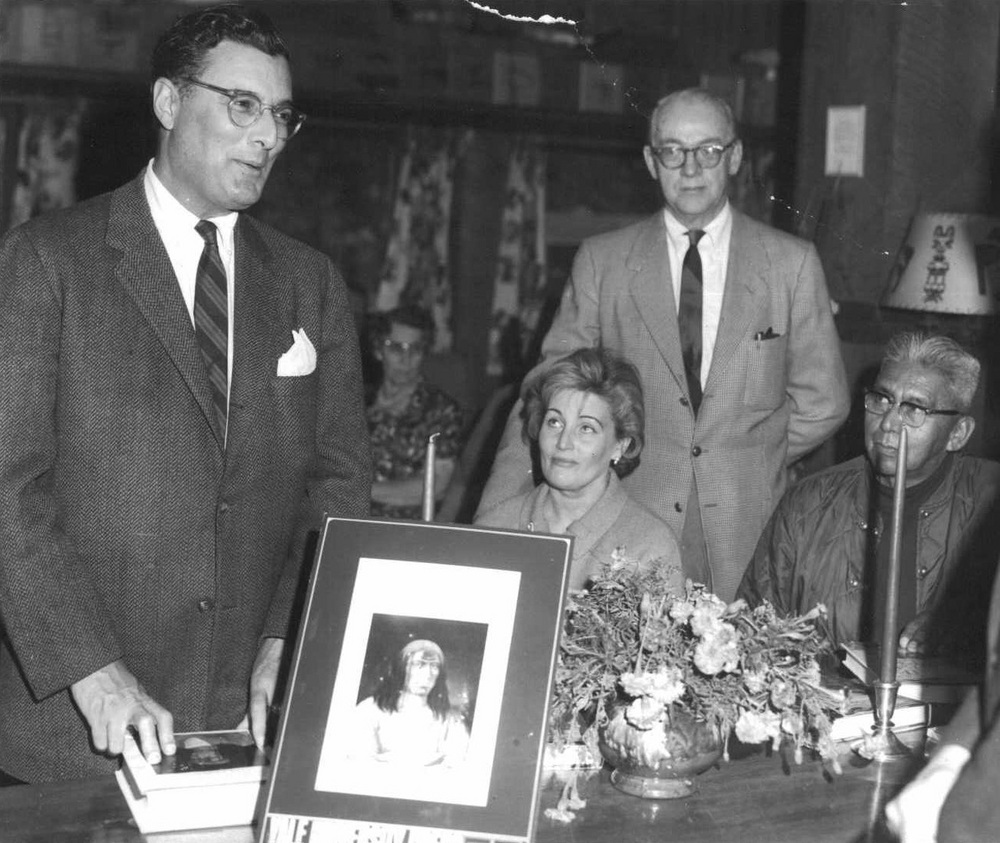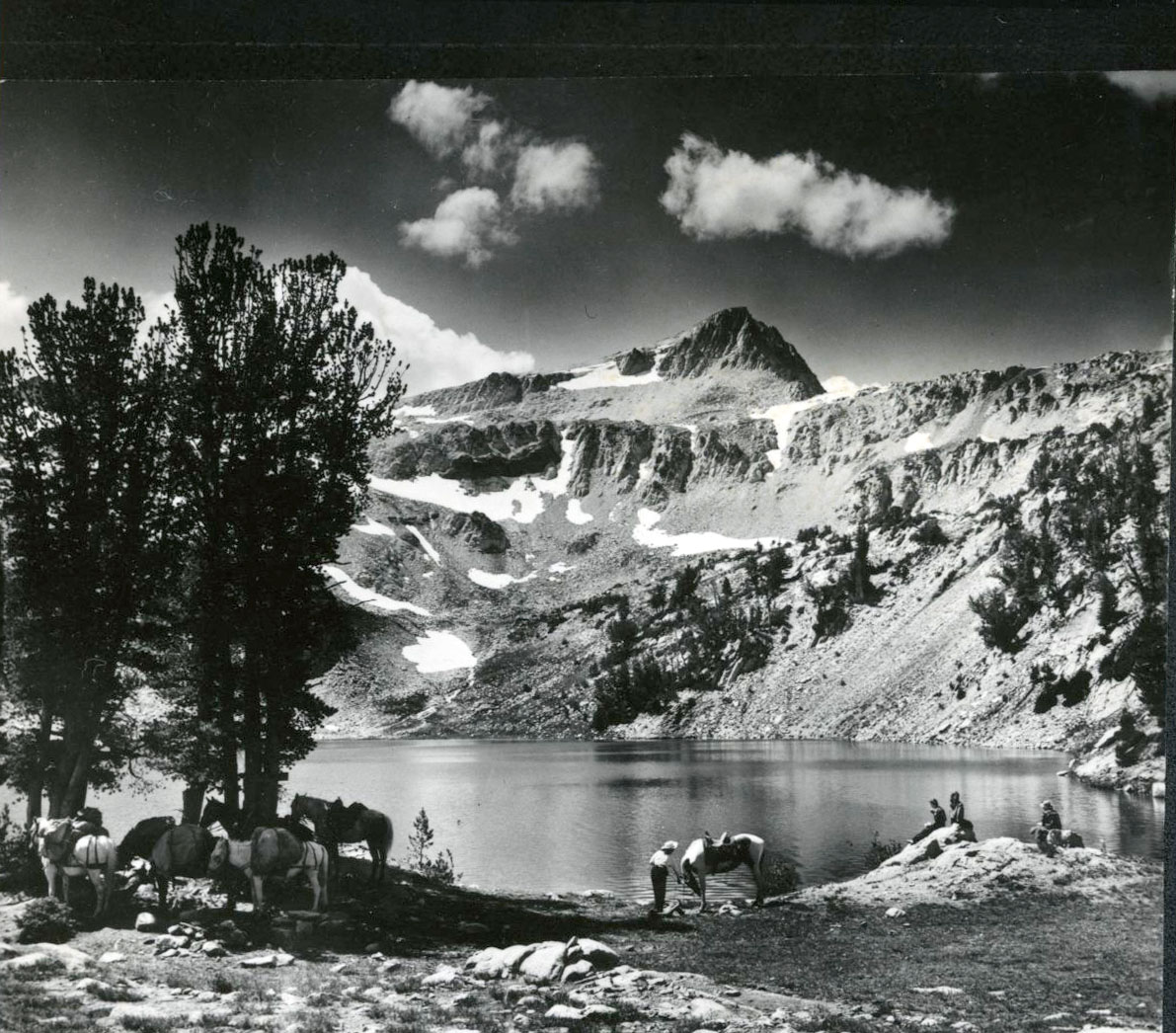Alvin Josephy was born in Woodmere, New York, in 1915, and died in his Greenwich, Connecticut, home on October 16, 2005. For over half of his ninety years, he had a small ranch near Joseph, and he considered Oregon home. His last book was a memoir titled A Walk toward Oregon (2000).
Josephy's family was prominent in the publishing world. His grandfather, S.K. Knopf, bankrolled H.L. Mencken and the American Mercury magazine, and publisher Alfred A. Knopf was an uncle. Josephy attended Horace Mann School in New York City and then went to Harvard for two years. The stock market crash hurt the family and chased him to Hollywood, where he took a junior screenwriting job. He returned to New York, pounded the pavements. and eventually caught on at the New York Herald Tribune. While at the Tribune, he covered Mexican President Lázaro Cárdenasand Leon Trotsky, who was living in exile at the home of Frida Kahlo and Diego Rivera.
When Pearl Harbor was attacked on December 7, 1941, Josephy was news director at radio station WOR in New York. The war took him to Washington D.C., and Archibald MacLeish's Office of War Information. But Josephy wanted to be closer to the front, so he went through Marine Corps boot camp and was sent overseas as a war correspondent. He covered the battles of Guadalcanal, Guam, and Iwo Jima, winning a Bronze Star for his effort to make an audio recording of the landing at Guam.
After the war, Alvin worked briefly in Hollywood, writing scripts, columns for a friend's small newspaper, and pieces for veterans' groups. In 1951, Henry Luce hired him as Associate Editor at Time Magazine, and he and his wife Betty moved to Greenwich.
It was while on assignment for Time in Idaho that Josephy first heard about the story that would change his life. He immediately saw the Nez Perce War of 1877 as an epic drama of the West and began looking for books and articles about it. When he found L.V. McWhorter's Hear Me My Chiefs and Yellow Wolf, first-person accounts of the war and of the Nez Perce people, he decided to write a book.
Previous writers had relied solely on official documents and non-Indian accounts, but Josephy decided to meet with the few survivors of the war in their homes and sweat lodges. With tribal leaders, he worked toward the founding of the Nez Perce National Historical Park in Idaho in 1965 and helped extend the park to sites in Washington, Montana, and Oregon in 1992. Alvin and Betty regularly hosted Nez Perce children at their Joseph ranch, and a few of them visited and stayed with them in Greenwich.
In 1958, Josephy published an article on Chief Joseph and the war in American Heritage Magazine, which led to his book Patriot Chiefs in 1961. The Nez Perce Indians and the Opening of the Northwest was published to national acclaim in 1965, and in 1968 The Indian Heritage of America was nominated for a National Book Award.
While working fulltime at Time, Josephy began edging West, first spending summer weeks in Lewiston, Idaho, and then, in the early 1960s, buying the ranch in Oregon. He left Time in 1960 and went to work for American Heritage (where he hired David McCullough among others) and continued his writing career. He retired from American Heritage as vice president and editor-in-chief in 1979.
Josephy's other books on Indians and the West include Now that the Buffalo's Gone, Red Power, and Black Hills, White Sky. He edited and wrote forewords for dozens of books on art, history, war, and the environment and followed his own curiosity to write Civil War in the American West and a History of the Congress of the United States.
In 1988, Josephy helped found Fishtrap, a writing center near his ranch in the Wallowas, when he invited New York literary agents, publishers, and writer friends to a conference on "Western Writing, Eastern Publishing." He was a magnet for publishers from east and west; poets, novelists, journalists, and historians all came to call at his home in Joseph.
Josephy received the Charles Erskine Scott Wood Distinguished Writer Award from Oregon Literary Arts in 1993 and an Oregon Governor's Arts Award in 1996. The Oregon Cultural Heritage Commission included The Nez Perce Indians and the Opening of the Northwest on its list of The 100 Oregon Books. His papers are at the Knight Library at the University of Oregon, and his extensive personal library is at the Smithsonian Museum of the American Indian and at Fishtrap, where the collection is the foundation of the Alvin and Betty Josephy Library of Western History and Culture.
-
Alvin Josephy, 1965.
Alvin Josephy (left) at release of his book The Nez Perce Indians and the Opening of the Northwest in 1965. To Josephy's left is his wife Betty, Chester Kerr of Yale University Press, and Nez Perce elder C. Humphreys. Photo from the Wallowa County Chieftain, courtesy Rich Wandschneider, Josephy Library
-
![]()
Joseph and the Eagle Cap Mountains..
Courtesy Oregon Hist. Soc. Research Lib., 0120287
Related Entries
-
![Fishtrap Inc.]()
Fishtrap Inc.
Fishtrap had its beginnings in 1987, when writers Kim Stafford, of the …
-
![Heinmot Tooyalakekt (Chief Joseph) (1840-1904)]()
Heinmot Tooyalakekt (Chief Joseph) (1840-1904)
Heinmot Tooyalakekt (Thunder Rising to Loftier Mountain Heights), also …
-
![Joseph (town)]()
Joseph (town)
The town of Joseph, situated at the base of the Wallowa Mountains at th…
Map This on the Oregon History WayFinder
The Oregon History Wayfinder is an interactive map that identifies significant places, people, and events in Oregon history.
Further Reading
Baker, Jeff. Oregonian, October 19, 2005.
Josephy, Alvin. Walk toward Oregon. New York: University of Oklahoma Press, 2001.




